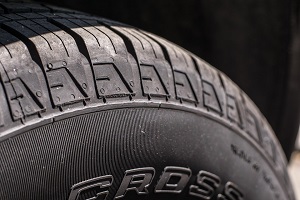The construction of the modern tire is a testament to how far engineering and technology have come over the centuries. No more are the days of an air-filled donut comprised of rubber. Years of research by the world’s top tire companies have resulted in the tires we have today, which are full of state-of-the-art materials and technology.
Thank you for reading this post, don't forget to subscribe!Tread
The outermost layer of your tire is called the tread. This is the patterned rubber layer you can see. The pattern of the tread will depend on the type of tire you purchase and what use it is intended for.
Belts (or Belt System)
Directly below the tread of your tire are the belts. Most commonly, belts are constructed of steel. Their primary purpose is to provide stability and strength to the tread so that the tires will handle better and last longer.
Body Ply
One of the most important parts in the construction of the tire, the body ply, is located beneath the steel belts. The body ply is typically a sheet of polyester material topped with a bit of rubber. The body ply is integral to helping the tire bear weight and hold its shape.
Bead
On each side of the tire, you will find something called the “bead,” which is made of a mix of wire and rubber materials. The bead connects the tire to the rim and creates a seal, preventing air from escaping.
Inner Liner
The innermost layer of the tire is the inner liner, whose job is to keep the air inside the tire. So that the inner liner can do its job properly, it is made of materials which air cannot penetrate.
Sidewall
On either exterior side of your tire, you have sidewalls. The sidewalls are made of rubber of varying stiffness that protect your tire from curbs and other damaging elements.
Over time, each element of a tire has been added to improve their performance and longevity, so that we now have tires lasting as many as 100,000 miles! That’s a long way from the typical lifespan of a bias ply tire in 1970—a mere 20,000 miles.


